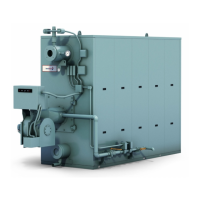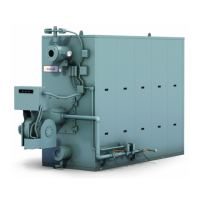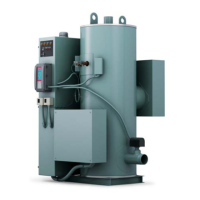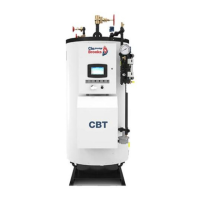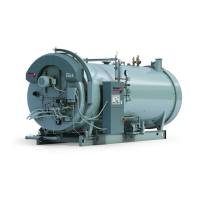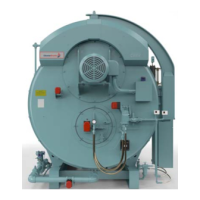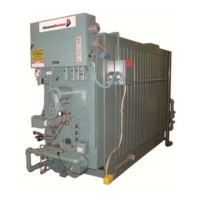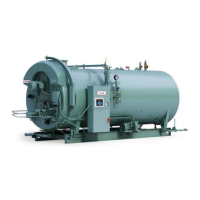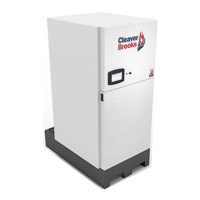Profire V Burner Chapter 2
750-177 2-33
The pilot should be checked monthly for loosening of
components and carbon buildup. Before removing the pilot,
ensure that the fuel supply is shut off.
On direct spark oil units, once you have removed the drawer
assembly, check the electrode to nozzle gap and adjust if
necessary. Refer to the drawer assembly drawings in the
ADJUSTMENT section.
For burners equipped with a gas pilot, the pilot is located on
the side opposite to the main gas entrance. Close the gas pilot
cock. Disconnect the pilot gas supply line. Remove the
screws on the pilot access plate. Disconnect the high voltage
ignition cable by pulling it straight back, away from the pilot
assembly. The pilot gun assembly will slide back away from
the flame side of the burner. Once the pilot assembly is clear
of the burner head bracket, turn the pilot assembly and retract
it through the access hole. Inspect the electrode and adjust the
gap if necessary. Thoroughly clean and adjust the porcelain
insulated electrodes. Correct all variations from the clearance
dimensions. If the insulation on the high voltage cables
becomes cracked or charred, install new cables. Ignition
cable should not be exposed to moisture, abrasion, or rough
handling. See that the connectors are in perfect contact with
the cable ends. Unscrewing the snap portion of the connector
will show whether this is true.
FLAME SCANNER
The scanner must be clean. Even a small amount of
contamination will reduce the flame signal. Wipe the scanner
lens with a clean soft cloth. Check pilot and flame signal
strength.
BURNER MOUNTING INSPECTION
The seal between the burner flange and furnace front plate
must not permit combustion gasses to escape. Periodic
inspection is important. If leaking occurs, refer to the
INSTALLATION section for proper sealing procedure.
EXTENDED SHUTDOWN
When shutting down the burner for an extended period of
time, the operator should use the following general guidelines
to protect the burner from its surrounding elements.
This will add to the operating life of the burner:
1. Turn the main electrical disconnect switch to the burner
to “Off.”
2. Close all main fuel valves.
3. If the burner operates in a damp environment, cover it
with plastic to protect all electrical components from
moisture. Remove burner control and store in a dry area.
